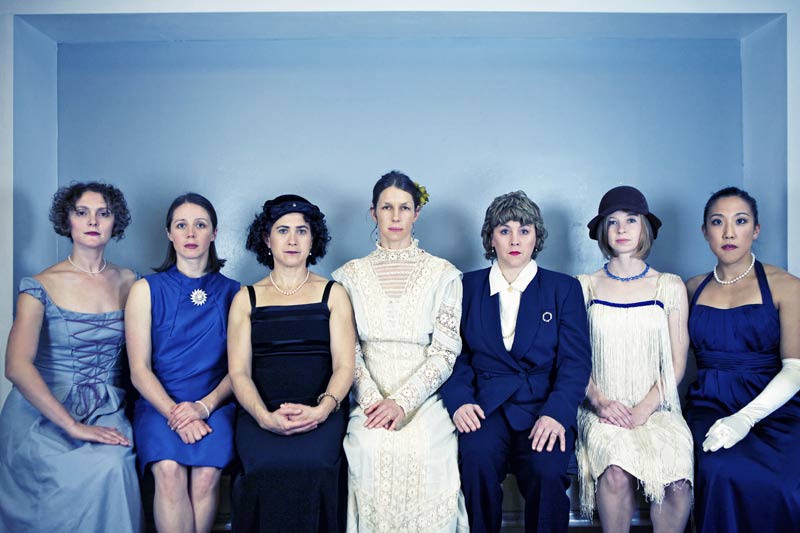 Photo: Pak Han
Photo: Pak Han
By Martha Ullman West
I’ve been spending a lot of time at Conduit since I moved to Portland’s South Park blocks – also known as the city’s “cultural district” – a month ago, happily walking a few blocks to see Top Shake Dance; the studio’s 17th anniversary benefit, where it was lovely to see some excerpts of Mary Oslund’s work; and, most recently, Thursday night’s opening of Bay Area choreographer Randee Paufve’s So I Married Abraham Lincoln …, subtitled A Dance about the Life of Mary Todd Lincoln and the American First Lady.
It’s a lovely piece, containing all the attributes of a really good novel: it makes you laugh and makes you cry and makes you think. Paufve, no stranger to Portland – she’s danced with Mary Oslund and Gregg Bielemeier and performed her own work here as well – has incorporated spoken text, a score that includes classical, folk and rock music, some of which the dancers sing, and her own space-devouring movement vocabulary into one of the best pieces of dance theater I’ve seen in many a moon.
The theatrical elements are wonderful: period dresses suspended from the studio’s ceiling, a chandelier of delicate teacups, Jeff Forbes’ sensitive lighting design, Heather Heise’s integration of the disparate elements of the score. But it’s the movement that tells what is basically a tale of widowhood and grief, through the life of the first woman to receive the dubious title of First Lady.
The piece begins in Conduit’s lobby. Paufve’s dancers, who for this show include the seamless integration into the cast of such Portland dancers as Mike Barber and Celine Bouly, perform full-bodied solos that tell you this choreographer is all about moving in space, even confined space.
And kicking over the traces, as the cast of First Ladies does a few minutes into the formal performance, in which they sit primly in straight-backed chairs until they suddenly, and quite violently, eject themselves from them.
Throughout the piece, small, dainty movement – the delicate lifting of a teacup, the folding of hands demurely into laps and posing formally for an official portrait, the smoothing back of hair – is juxtaposed with large thrusts of the body, legs bending in wide Limon-style second position, throughout the piece, with some writhing and rolling during a make-belief seance, a beauty pageant lineup, and some small group poses that reminded me of those sentimental small marble domestic statues so beloved by the Victorians, who viewed women as the Angels of the House.
As a culture, we like to view our besieged First Ladies as Angels of the White House, preferably silent. Todd Lincoln was heavily criticized by the press and populace, as were Eleanor Roosevelt and Hillary Clinton; it’s a helluva job for any woman interested in being her own person. Paufve reflects on this with much of the cast surging across the space clad in shifts, chanting, “Mary, Mary.”
While I was impressed by the performances of individual dancers (I couldn’t take my eyes off Katie Kruger, who has been dancing with Paufve since 2007) I was also struck by the power of the unison movement, often performed to sound that resembled a beating heart. But the soft singing of “Oh Mary, don’t you weep don’t you mourn” as the piece concluded and Forbes’ lights bathed the dancers in twilight, brought me to tears. This often political piece became for me deeply personal.